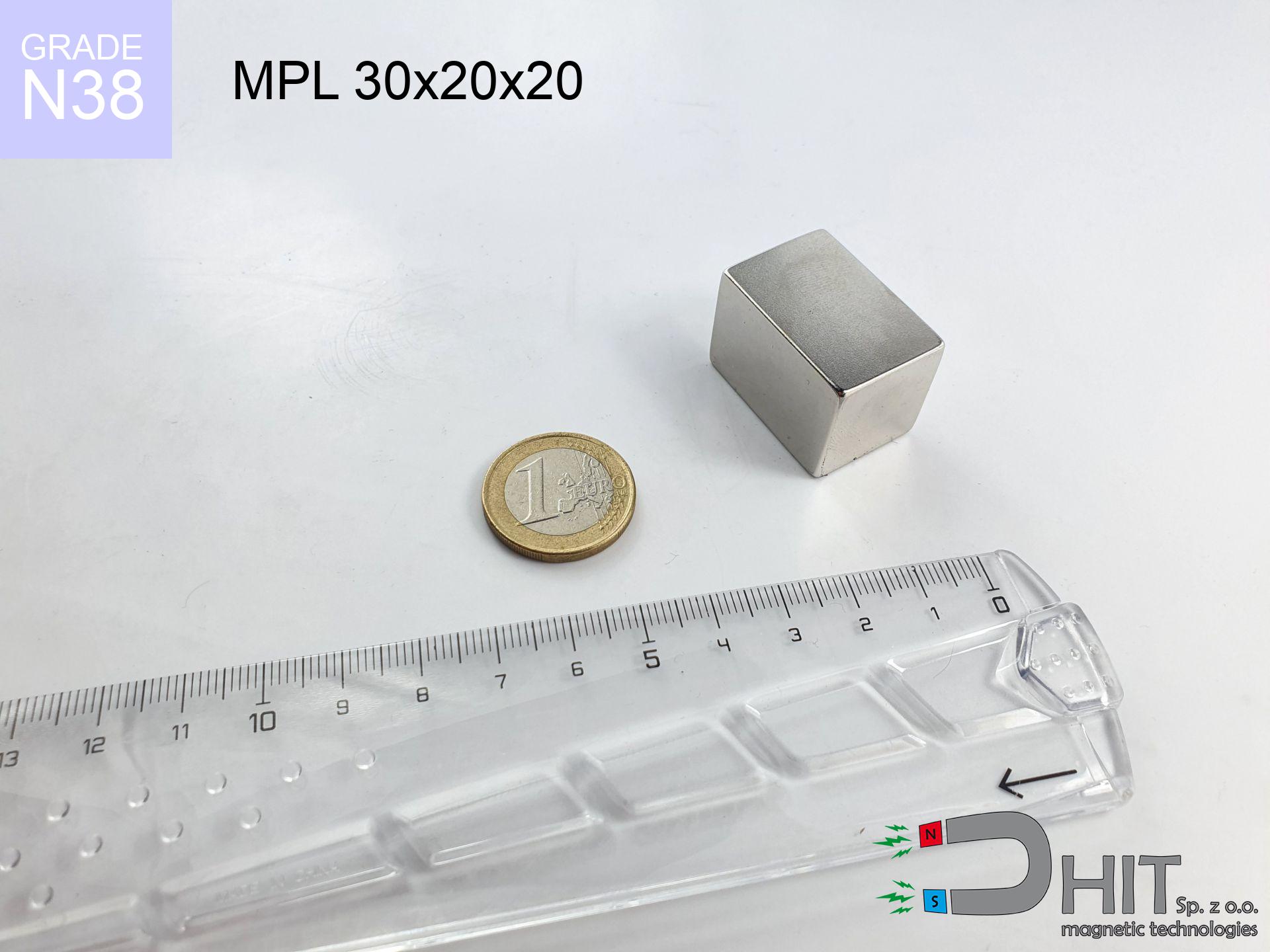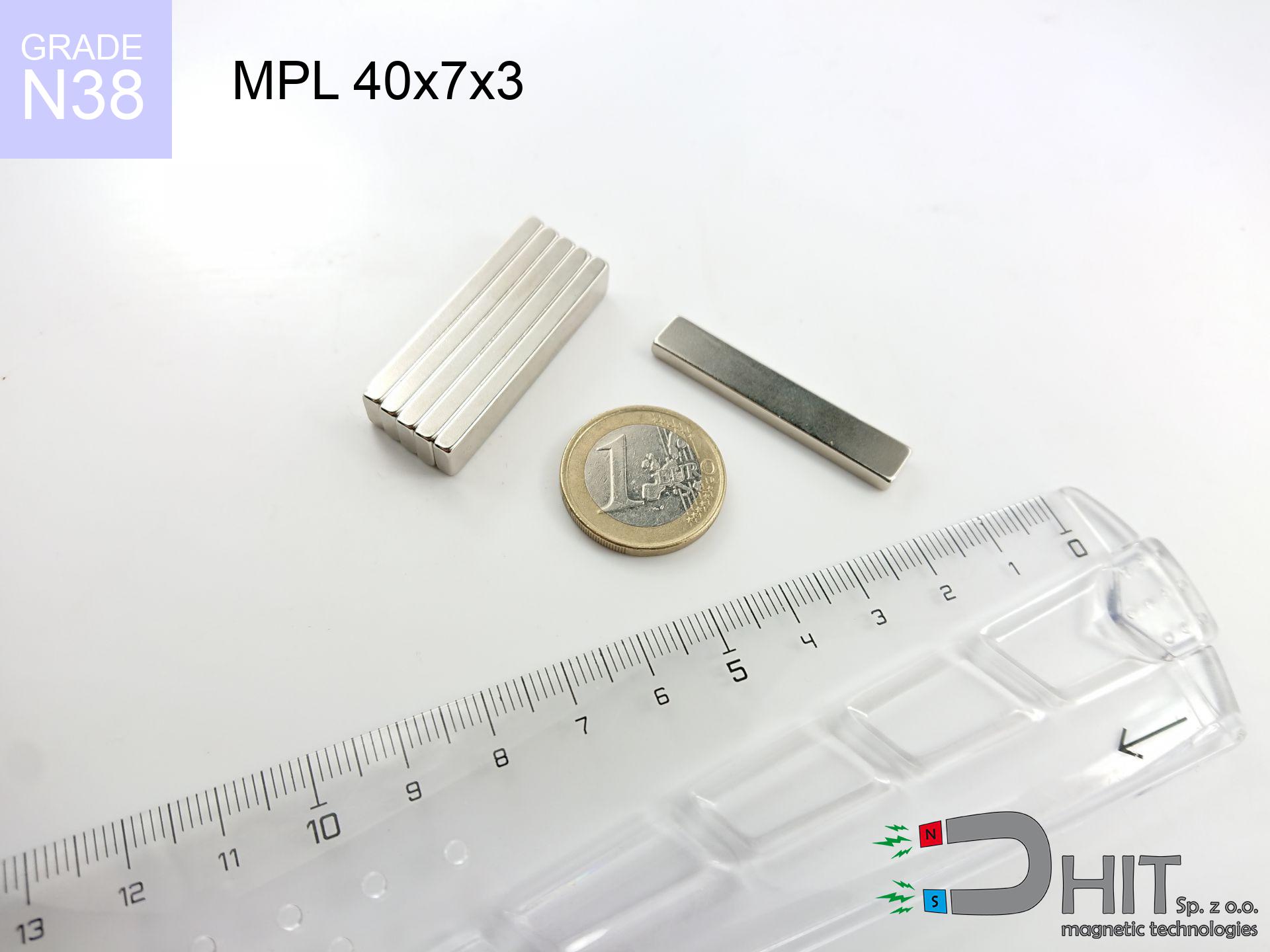BM 550x180x70 [4x M8] - magnetic beam
magnetic beam
Catalog no 090221
GTIN/EAN: 5906301812562
length
550 mm [±1 mm]
Width
180 mm [±1 mm]
Height
70 mm [±1 mm]
Weight
35320 g
5708.18 ZŁ with VAT / pcs + price for transport
4640.80 ZŁ net + 23% VAT / pcs
bulk discounts:
Need more?
Give us a call
+48 22 499 98 98
or send us a note via
inquiry form
the contact form page.
Weight and shape of magnetic components can be checked with our
online calculation tool.
Same-day processing for orders placed before 14:00.
Product card - BM 550x180x70 [4x M8] - magnetic beam
Specification / characteristics - BM 550x180x70 [4x M8] - magnetic beam
| properties | values |
|---|---|
| Cat. no. | 090221 |
| GTIN/EAN | 5906301812562 |
| Production/Distribution | Dhit sp. z o.o. |
| Country of origin | Poland / China / Germany |
| Customs code | 85059029 |
| length | 550 mm [±1 mm] |
| Width | 180 mm [±1 mm] |
| Height | 70 mm [±1 mm] |
| Weight | 35320 g |
| Manufacturing Tolerance | ±1 mm |
Physical properties of sintered neodymium magnets Nd2Fe14B at 20°C
| properties | values | units |
|---|---|---|
| Vickers hardness | ≥550 | Hv |
| Density | ≥7.4 | g/cm3 |
| Curie Temperature TC | 312 - 380 | °C |
| Curie Temperature TF | 593 - 716 | °F |
| Specific resistance | 150 | μΩ⋅cm |
| Bending strength | 250 | MPa |
| Compressive strength | 1000~1100 | MPa |
| Thermal expansion parallel (∥) to orientation (M) | (3-4) x 10-6 | °C-1 |
| Thermal expansion perpendicular (⊥) to orientation (M) | -(1-3) x 10-6 | °C-1 |
| Young's modulus | 1.7 x 104 | kg/mm² |
Elemental analysis
| iron (Fe) | 64% – 68% |
| neodymium (Nd) | 29% – 32% |
| boron (B) | 1.1% – 1.2% |
| dysprosium (Dy) | 0.5% – 2.0% |
| coating (Ni-Cu-Ni) | < 0.05% |
Sustainability
| recyclability (EoL) | 100% |
| recycled raw materials | ~10% (pre-cons) |
| carbon footprint | low / zredukowany |
| waste code (EWC) | 16 02 16 |
Other proposals
Pros as well as cons of Nd2Fe14B magnets.
Strengths
- Their power remains stable, and after around ten years it drops only by ~1% (according to research),
- They maintain their magnetic properties even under strong external field,
- In other words, due to the shiny finish of nickel, the element is aesthetically pleasing,
- They show high magnetic induction at the operating surface, which increases their power,
- Made from properly selected components, these magnets show impressive resistance to high heat, enabling them to function (depending on their form) at temperatures up to 230°C and above...
- Thanks to the option of flexible forming and adaptation to individualized requirements, magnetic components can be manufactured in a broad palette of forms and dimensions, which increases their versatility,
- Significant place in innovative solutions – they are utilized in magnetic memories, drive modules, diagnostic systems, also modern systems.
- Compactness – despite small sizes they offer powerful magnetic field, making them ideal for precision applications
Disadvantages
- Susceptibility to cracking is one of their disadvantages. Upon intense impact they can break. We recommend keeping them in a strong case, which not only secures them against impacts but also increases their durability
- When exposed to high temperature, neodymium magnets experience a drop in power. Often, when the temperature exceeds 80°C, their strength decreases (depending on the size, as well as shape of the magnet). For those who need magnets for extreme conditions, we offer [AH] versions withstanding up to 230°C
- Due to the susceptibility of magnets to corrosion in a humid environment, we suggest using waterproof magnets made of rubber, plastic or other material immune to moisture, in case of application outdoors
- Limited ability of making threads in the magnet and complex shapes - preferred is cover - magnet mounting.
- Potential hazard related to microscopic parts of magnets are risky, when accidentally swallowed, which is particularly important in the aspect of protecting the youngest. Furthermore, tiny parts of these products are able to be problematic in diagnostics medical after entering the body.
- Due to neodymium price, their price is higher than average,
Pull force analysis
Highest magnetic holding force – what contributes to it?
- with the contact of a sheet made of special test steel, ensuring full magnetic saturation
- possessing a massiveness of at least 10 mm to ensure full flux closure
- characterized by smoothness
- under conditions of no distance (surface-to-surface)
- for force acting at a right angle (in the magnet axis)
- in temp. approx. 20°C
Key elements affecting lifting force
- Gap (between the magnet and the metal), as even a microscopic clearance (e.g. 0.5 mm) leads to a drastic drop in force by up to 50% (this also applies to varnish, rust or debris).
- Loading method – catalog parameter refers to detachment vertically. When applying parallel force, the magnet holds significantly lower power (often approx. 20-30% of nominal force).
- Element thickness – for full efficiency, the steel must be sufficiently thick. Paper-thin metal limits the lifting capacity (the magnet "punches through" it).
- Material composition – not every steel reacts the same. Alloy additives weaken the interaction with the magnet.
- Surface condition – smooth surfaces ensure maximum contact, which improves field saturation. Uneven metal reduce efficiency.
- Operating temperature – NdFeB sinters have a negative temperature coefficient. When it is hot they are weaker, and at low temperatures they can be stronger (up to a certain limit).
Holding force was checked on the plate surface of 20 mm thickness, when a perpendicular force was applied, however under attempts to slide the magnet the lifting capacity is smaller. Moreover, even a minimal clearance between the magnet and the plate decreases the load capacity.
Precautions when working with neodymium magnets
Dust is flammable
Dust created during grinding of magnets is flammable. Avoid drilling into magnets without proper cooling and knowledge.
Operating temperature
Do not overheat. NdFeB magnets are susceptible to heat. If you require resistance above 80°C, look for special high-temperature series (H, SH, UH).
Data carriers
Data protection: Neodymium magnets can damage payment cards and sensitive devices (heart implants, medical aids, mechanical watches).
Pacemakers
Medical warning: Neodymium magnets can deactivate heart devices and defibrillators. Do not approach if you have electronic implants.
This is not a toy
NdFeB magnets are not intended for children. Eating a few magnets can lead to them attracting across intestines, which poses a direct threat to life and requires urgent medical intervention.
Physical harm
Risk of injury: The pulling power is so great that it can result in hematomas, crushing, and even bone fractures. Protective gloves are recommended.
Precision electronics
A powerful magnetic field disrupts the operation of magnetometers in phones and navigation systems. Keep magnets near a smartphone to avoid breaking the sensors.
Magnets are brittle
Watch out for shards. Magnets can explode upon uncontrolled impact, launching sharp fragments into the air. Wear goggles.
Respect the power
Before starting, check safety instructions. Sudden snapping can break the magnet or hurt your hand. Be predictive.
Allergy Warning
Nickel alert: The nickel-copper-nickel coating consists of nickel. If redness occurs, cease handling magnets and use protective gear.

![Magnetic beam (separator) BM 550x180x70 [4x M8] Magnetic beam (separator) BM 550x180x70 [4x M8]](https://cdn3.dhit.pl/graphics/banners/magnet.webp)
![BM 550x180x70 [4x M8] - magnetic beam](https://cdn3.dhit.pl/graphics/products/bm-550x180x70-4x-m8-nic.jpg)



![SM 25x175 [2xM8] / N52 - magnetic separator SM 25x175 [2xM8] / N52 - magnetic separator](https://cdn3.dhit.pl/graphics/products/sm-25x175-2xm8-gif.jpg)

